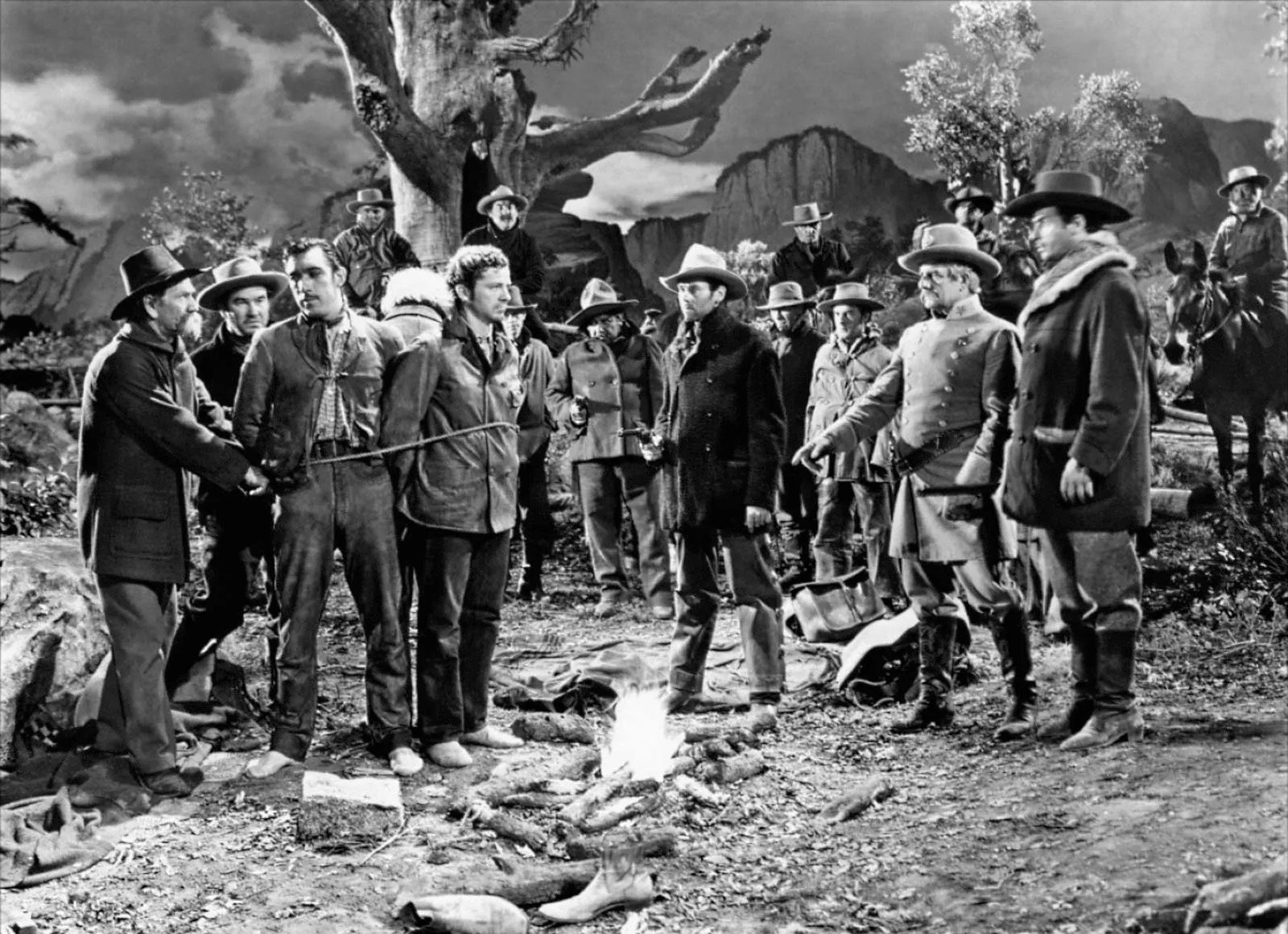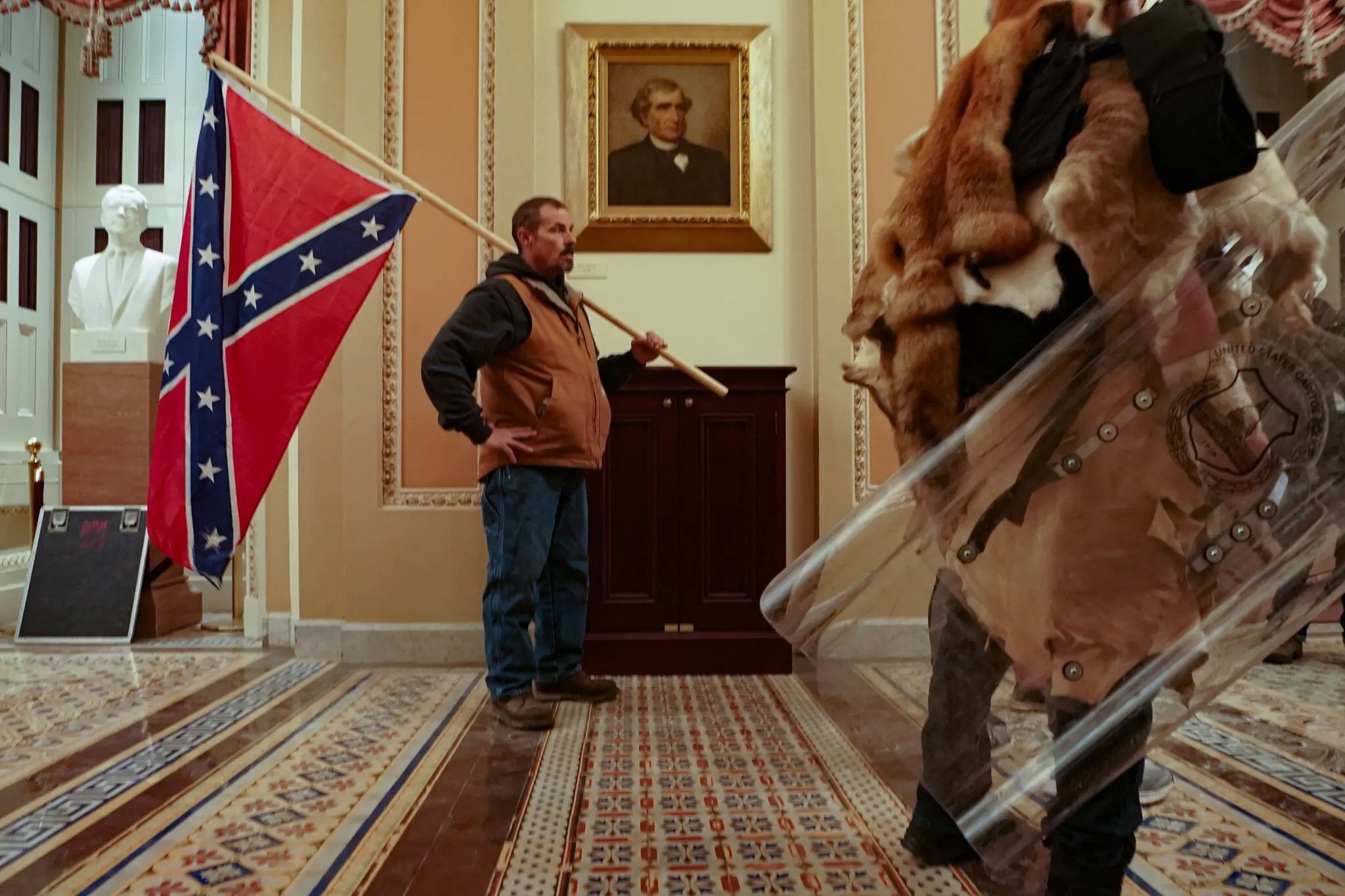Vigilantes are US
The urbanist Jane Jacobs celebrated the city’s “organized complexity.” She rhapsodized over “the daily ballet of Hudson Street”—her home in Greenwich Village (The Death and Life of Great American Cities,1961).
For Jacobs her competitor Louis Mumford in The Culture of Cities (1938) offered merely “a morbid and biased catalog of ills” (Death and Life, 20). Mumford’s solution, the Garden City, promoted flight to the suburbs that was enabled top-down: by President Eisenhower’s interstates and by Robert Moses’s parkways.
What made the city’s chaos livable for Jacobs came bottom-up: “eyes on the street.” Density on urban streets promises safety. The strange attractor behind “eyes on the street” was simple: trust. When some citizen must choose, for instance, whether or not to take responsibility in combating the barbarism of strangers—with enough density you can trust someone will rise to the occasion.
When Manhattan’s Bryant Park saw a crime surge in the 1980’s, Jacobs’s “eyes on the street” inspired William “Holly” Whyte’s “eyes on the park” concept in the park’s renewal (1988–92). Whyte’s design, executed by Dan Biederman, lowered the park so pedestrians on busy sidewalks could see into it. “Eyes on the park” reduced crime by almost 100%. Biederman had been vigilant. He trusted.
When Vigilance becomes Vigilantism
“Eyes on the street” may have the positive effects Jacobs describes, but it is at least cognate with a phenomenon that has haunted American history. Vigilantes are literally “watchmen.” “Eyes on the street” can become the extra-judicial justice that emerged on January 6 when thousands believed they were fighting the barbarism of a stolen election.
State-supported vigilantism began with the Constitution’s Fugitive Slave Clause which legalized bounty hunters to track down enslaved runaways. The Fugitive Slave Acts of 1793 and 1850 clarified the processes enslavers used to claim their property. No less than President Washington invoked the 1703 Act to retrieve Ona Judge, his enslaved “property” in the waning days of his second term.
On the frontier, vigilance committees kept informal order whenever official authority was deemed imperfect. For the insurrectionists, the deep state was imperfect indeed. By August 2024, 1,400 people were charged with federal crimes.
According to legal scholars Jon Michaels and David Noll, since then vigilantism has infected every aspect of our democracy and now threatens its continuance (Vigilante Nation: How State-Sponsored Terror Threatens Our Democracy, 2024).
Vigilantism and Popular Culture
Popular culture has long had an uncomfortable love affair with vigilantism. In cop shows and The Marvel Cinematic Universe (MCU), vigilantism—as heroic ideal and as problem—is the soft underbelly of American film and TV.
William Wellman’s The Ox-Bow Incident, the Academy’s Best Picture in 1943 when America had taken the high road in the fight against fascism, is Hollywood’s most moving examination of vigilantism.
It’s 1885. A rancher has been murdered on the Nevada frontier. A posse forms. Major Tetley (Frank Conroy) wants to teach his son “to be a man.” He dons his Confederate officer’s grays to lead the posse.
They round up three strangers and, after much debate, hang them. The hanging done, the sheriff ferrets out the true rustlers. Gil Carter (Henry Fonda), who opposed the hanging, conveys Wellman’s message. Fonda reads aloud the letter Donald Martin (Dana Andrews) had written to his wife before being hanged:
A man just naturally can't take the law into his own hands and hang people without hurtin' everybody in the world, 'cause then he's just not breaking one law but all laws. Law is […] the very conscience of humanity.
This, read in the soft-spoken voice of Hollywood’s iconic common man—Tom Joad, Young Mr. Lincoln, Juror #8 in Twelve Angry Men—points to the lawlessness of Nazi Germany. Fonda rips out the soft underbelly of vigilantism.
Like Tetley’s, there’s nothing soft about the vigilantism that broke out on January 6, spurred on by our norm-breaking president.
Our love affair with vigilantes didn't start with The Ox-Bow Incident or end with the MCU. In the latest award-winning Amazon Prime copaganda series Lioness (2023-24), Joe (Zoe Saldana) leads the darkest of dark CIA teams, Lioness. When a congresswoman, rescued from kidnapping by a drug cartel, asks Saldana to avenge her husband and young son, brutally killed in the kidnapping, the always compelling Saldana answers flatly, “My agency doesn't do courtrooms.”
Videos of the insurrection show men and women charged with the high confidence that always drives vigilantism. Many Confederate flags were seen on January 6, even in the Rotunda.
Despite the mask of spontaneous moral outrage, the insurrectionists followed pre-arranged orders from somewhere above. How far above was the question. Courtrooms, or at least judicial activity, followed. As congressional sleuths and Jack Smith, Special Counsel for Trump Inquiries, slowly flushed out justice for the insurrection, we continued to stream police procedurals and the MCU that affirmed that it’s okay to cut corners to nail the bad guy.
Why do we have this uncomfortable love affair with vigilantism?
We long for justice, for a narrative that intuitively makes sense. We will consider extra-judicial justice based on instincts and intuitions even if it doesn’t fit the American narrative, equal justice for all.
Now, bent on retribution, Trump has proposed a Vigilante-in-Chief armed with an enemies list to head the FBI. Kash Patel doesn’t bother to mention any laws his villains have broken.
With open carry and Stand Your Ground laws proliferating, with more than daily mass shootings in 2024, with Kyle Rittenhouse and George Zimmerman found non-guilty, and with the (alleged) vigilante murder of UnitedHealthcare CEO, perhaps it’s time our eyes on the street cocked an eye toward our dark penchant for vigilantism.
Texas’s SB 8 rewards citizens handsomely for being eyes on fellow Texans who receive, perform, or facilitate an illegal abortion. Commenting on what they call “courthouse vigilantism,” Michaels and Noll point to “a slew of far less publicized statutes [that] authorize right-wing partisans to initiate lawsuits and disciplinary proceedings to punish teachers, librarians, medical providers, and school administrators” (Vigilante Nation, 8)
With such an American tradition of vigilantism behind it and presidential, Congressional, Supreme Court, and state permission structures in place, Michaels and Noll propose 19 Blue State Laws as a “Blueprint for the Fight.” I propose a twentieth, as a matter for serious reflection that might become law.
We need to acknowledge our toxic love affair with vigilantism and, as with an abusive spouse, we need to say, no more, no longer. Though first countenanced by the Constitution and Congress as a compromise with slave states, vigilantism is not the American way of justice.




